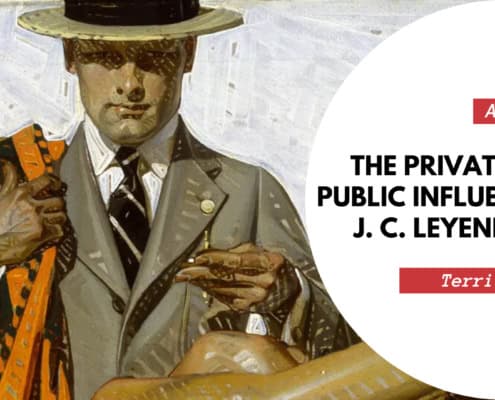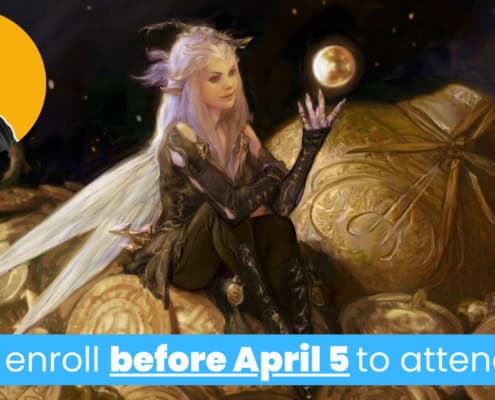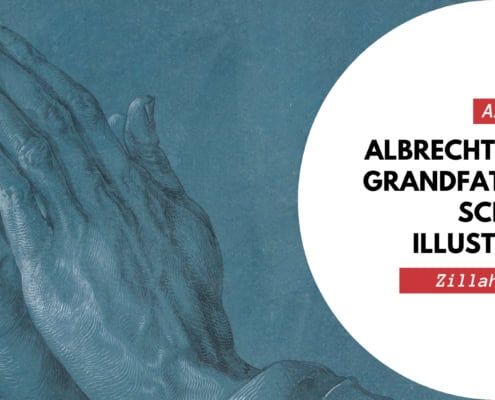While living in the seemingly remote town of Livermore, CA, I heard that Bill was going to be at a comic book shop in Berkeley. I was stoked! I remember walking past the widows leading to the door and seeing some painted pages he had done. I learned they were from a story called Slow Dancer, a short story he was writing and painting for Epic. There were other originals there as well, but the painted pages really hit me. They had beautiful color, depicted a sci-fi world, and bizarre, priest-like officials.
I was nervous, socially anxious and could barely talk to people in general, let alone an art hero. I don’t remember what I asked him, or even talking to Bill much. What I do remember is that he was friendly, confident, had great style, and generous with his time. I saw a flier showing that he was going to be in another shop in San Francisco the next day. I went to that event too, and brought a blank sketchbook to commission drawings from him.
From Bill I learned about Bernie Fuchs, Robert Heindel, Mark English, Sandy Kossin, and Barron Storey. This meeting would change the direction of my life and lead me to art school, illustration, back to comics, and eventually to painting. Years later, while looking through Barron’s journals (he was my teacher and mentor) I saw a drawing of Bill he made of that evening in San Francisco. It showed Bill, looking down at his hands while he sketched. Barron might have even been standing next to me or behind me while drawing it.




Return to Blog
The Visual Dichotomy of Comic Book Artist Bill Sienkiewicz
Color, Shape, and Cartoons
Bill Koeb
Picture Claude Monet, Ralph Steadman, Tex Avery, and Lyonel Feininger all speeding toward an intersection with a five year old sitting in the middle of it, scribbling on imaginary walls, instead of colliding, they merge into a single entity, a work of pure brilliance by the artist Bill Sienkiewicz.
The comic was Moon Knight, issue 23. The cover, stark, black and white, crisp line work with ink spatters, lots of ink spatters. The character, a cropped, hooded figure surrounded by darkness, a gritty urban skyline behind him, also covered in spatters that looked like falling snow. Moon Knight was gripping, and unlike anything I had seen in a comic. This was my introduction to the work of Bill Sienkiewicz, an artist whose work I have followed for nearly forty years. Throughout that time I have seen his work grow and his visual range expand while certain aspects that lie at the root of it remain the same. The most striking to me are his sense of color, his understanding and use of shape, and his ability to combine disparate elements into a cohesive whole.
The Language Of Color
Bill Sienkiewicz is an artist whose work is evocatively beautiful. Much of this is expressed through his use of color. There are few artists who understand or use color to the degree that Bill does. In his paintings, both personal and commercial, one can find the expression of warmth, love, fear, isolation, anger, through his use of temperature, saturation, compliments, etc., often in a single image. In the cover to New Mutants issue 22, shown here, its protagonist is rendered in a cartoonish style, with warm tones, while the villain is depicted in both a different style and color range.
Shapes, Shapes, and Shapes
At the core of Bill Sienkiewicz’s work is an understanding of shape and why it’s so important in picture making. Whether it be Elektra battling cyborgs, Jimi Hendrix jamming out blues riffs, or a watercolor study, Bill begins with silhouettes, and then uses value and color to explain, separate, and at times merge shapes into a cohesive and evocative whole. In addition to using shape to compose images, Bill is one of the few artists who understands how to cartoon, to push past representation to express something deeper. He pushes, pulls, stretches, and balloons characters and other pictorial elements to express drama, humor, character and emotion.
In interviews, Bill has credited artists such as Tex Avery, who as an animator and director, pushed the boundaries of animated cartoons, infusing his work with sarcasm, irony, and ribald humor. He has also talked of the influence of Ralph Steadman, whose drawings of Nixon, Hunter S. Thompson, and life in America during the 70s and 80s redefined political satire and social commentary in illustration.
New Mutants, a brilliant example of Sienkiewicz and use of shape
Examples of this can be seen in the pages of the series, The New Mutants, written by Chris Claremont. In this book, Bill took a group of characters who had a variety of interesting powers and backgrounds and began flattening some of them out, giving some rounded edges, and others sharp angles. He made them look and feel like the teenagers that they were, both overconfident and completely awkward at the same time. The characters began to feel like individuals, and this stretching, cartooning of them gave the book new life. New Mutants, especially Bill’s run from issue 18 to issue 31 is a fun book to read. They fight a demon bear, have a slumber party, are visited by an alien, fight in a mutant arena, are sucked into the mind of Professor X’s kid, and deal with teen angst, identity issues, and acne. Who wouldn’t want to read about all of that?
Emotions In Motion/Cartooning
There are many great artists working as illustrators today. Some who can draw and paint extremely well, others who can express the gist of a subject with only a few lines, still others who can create fantastical images that take a dry subject and imbue it with life. There are artists who are incredible at creating caricatures, or creating an image that cause viewers to laugh despite themselves. In much of his work, Bill Sienkiewicz does all of these things and more, he tells stories.
In the book, Daredevil, Love And War, written by Frank Miller, Bill combines characters who have exaggerated shapes and proportions with beautiful color, and expressive painting. He shifts the tone of the story based on which character is narrating while maintaining a sense of cohesion. In the story, three men see the women in their lives in a certain way. One thing that comes across is how little they truly see them, and how little they understand about the person inside.
Dichotomy
I refer to Sienkiewicz’s work as a dichotomy, as opposing forces, because that is how it often seems to me. An image, or series of images can at once be horrifying and funny, or harmonious and chaotic. In Elektra Assassin, Written by Frank Miller, there is a panel where Elektra is riding in a jeep through a tropical forest. In the back of the vehicle is a lion. There is an absurdity to the image that reminds me of old Tarzan films where the actors are living domestically amidst a world full of wild animals. Tarzan leaps out of their treehouse and goes off to wrestle a crocodile as if it were the most normal thing in the world.
In Stray Toasters, a graphic novel series written and illustrated by Sienkiewicz, he shifts from beautifully painted scenes of a mother and child to a sequence of a drunk detective who sees dancing pink elephants while shooting holes in his ceiling. There is a young boy in the story who is depicted as sweet and innocent in some places and dark and horrifying in others. It is a story about flawed and deeply disturbed people where Bill asks the question, are people capable of redemption?
More examples
My Personal History with the work of Bill Sienkiewicz
After reading Moon Knight, I looked for other work by Bill. I found pinups he did for various comics, bought books I was otherwise uninterested in for his covers, and began to develop an interest in painting. I was taking drawing and watercolor classes at a junior college and trying to figure out what to do with my life. I was interested in making comics, but didn’t know what that would look like as I wasn’t excited by most of the comics I saw on the racks. I knew that I had lost interest in drawing superheroes in comic books, and that was most of what was being published. I had yet to discover Swamp Thing, but was reading Epic Illustrated, Warren comics, and books by Larry Niven, Stephen King, and Edgar Rice Burroughs. I found some books by Howard Chaykin that were amazing, and some issues of Bizarre Adventures with work by Paul Gulacy, Neal Adams, and others.
While living in the seemingly remote town of Livermore, CA, I heard that Bill was going to be at a comic book shop in Berkeley. I was stoked! I remember walking past the widows leading to the door and seeing some painted pages he had done. I learned they were from a story called Slow Dancer, a short story he was writing and painting for Epic. There were other originals there as well, but the painted pages really hit me. They had beautiful color, depicted a sci-fi world, and bizarre, priest-like officials.
I was nervous, socially anxious and could barely talk to people in general, let alone an art hero. I don’t remember what I asked him, or even talking to Bill much. What I do remember is that he was friendly, confident, had great style, and generous with his time. I saw a flier showing that he was going to be in another shop in San Francisco the next day. I went to that event too, and brought a blank sketchbook to commission drawings from him.
From Bill I learned about Bernie Fuchs, Robert Heindel, Mark English, Sandy Kossin, and Barron Storey. This meeting would change the direction of my life and lead me to art school, illustration, back to comics, and eventually to painting. Years later, while looking through Barron’s journals (he was my teacher and mentor) I saw a drawing of Bill he made of that evening in San Francisco. It showed Bill, looking down at his hands while he sketched. Barron might have even been standing next to me or behind me while drawing it.
Going For It
I’ve learned a lot from Bill over the years. A lot about drawing, painting, color, mixed media, and making pictures. I saw how he treated people with kindness, expressed his opinions honestly, and always seemed to want to learn more, to grow as both an artist and person. One thing I like about Bill in particular is that he goes for it. If he makes a thing and is unhappy with it he makes another. He started out wanting to push the envelope about what was possible in visual storytelling, and 40 years later is still pushing. I look forward to his next work with excitement and anticipation of something wonderful.
Bill Koeb
Comic Book & Sequential Artist
Share this entry
Freebies
Classes Now Enrolling
J. C. Leyendecker: An Illustrator’s Private Life and Public Influence
J. C. Leyendecker was an illustrator whose distinctive style, & influential advertising work left a lasting impact on 20th-century art.
Iain McCaig, Legendary Concept Designer, Illustrator, & Writer
Albrecht Dürer: Grandfather of Scientific Illustration
Gérard DuBois, Illustrator & Gallery Artist
Justin Gérard, Illustrator